The landscapes between photography and painting by Dorothy Simpson Krause
Dorothy Simpson Krause is an American artist who works mainly with collage, combining traditional materials with digital techniques.
She is not a photographer, but she makes intensive use of photography in her collage. Typically her work would be considered non-photographic, and classified under some form of visual art but not “Photography”. For a long time I have been tried to convince photographers that the border between photographic image and other visual arts is not as sharp and it is not easy to determine what photography is and what is not. Indeed, the question itself has no real sense, because photography is an ambiguous media, photography is actually a term commonly used to group practices also substantially different between them. For this reason I’m happy to have on Camera Obscura such an artist, that move the border of photo art.
Furthermore Dorothy Simpson Krause was one of the first artist to use computers and digital printing systems, and I was interested in discussing the use of informatics in the world of art. Always photographers, with a few well known exceptions like Giacomelli, went hand in hand not only with technic, as in any form of art, but also with technology. Despite this, computers and digital technology, until a very short time ago, where seen in general with some diffidence, qualitative doubts but especially testarde crusades against an unknown instrument.
Finally, some recent works of Dorothy Simpson Krause remember very much the appearance of some images obtained using historical process. The first time that I came across iher work, I thought ithey where gum bichromate prints. As gum is one of my favorite techniques I have a special attraction for images of this type.
Although the work of this American artist is much more complex, only a few of these works halfway between painting and photography will accompany the interview.
Fabiano Busdraghi: You are considered one of the pioneers in the use of computers in art. Usually it is a tool employed in science and technology, while people who have an artistic or literary formation prefer less technological instruments (but in the younger generation, this distinction is less marked). Do you believe it is still the case? Do you think that the spread of computer is essential for art in the future?
Dorothy Simpson Krause: The computer, like the wheel, is a universal tool. It can replicate other media and materials and also be used in unique ways. In the photography world digital seems to be replacing film, but there will always be artists who choose to work with processes that produce work they find rewarding - from platinum prints to Holga prints.
FB: One of the reasons informatics is held away from a creative use is linked with a sort of contradictory relation between simplicity and complexity in art. Certain manipulations are made extremely simpler by computers. Today one might think that the artists finally have the freedom of expression that they searched in the past, without the filter and limit of technical difficulties. At the same time, however, democratization of execution procedures may appear to reduce the value of art craft.
For example, today it is much more difficult to find a posterized photography in a gallery, and one of the reasons is that this effect can be obtained in seconds with Photoshop. Sometimes it seems that complex, difficult, long and slow procedures add value to a creative work.
I am not saying that the digital manipulation is simple, the use of computers has its difficulties and its learning curve. But I wonder if the complexity of the technique used to obtain a print add value to it. Has the spread of the computers removed the “aura” from part of the artistic productions of the past? Is it leading to an appreciation of a masterwork more for its intrinsic qualities and less for the external characteristics of the object?
DSK: I don’t think it matters how a work is produced. It’s the final product that is important.
One complex project I recently completed was as the von Hess Visiting Artist at The University of the Arts Borowsky Center, in Philadelphia. I used silver, gold and black metallic inks on the Heidelberg Offset Lithography press with a chine colle inkjet print on sheer paper.
I began the metallic offset portion of the print by scanning a metal and plaster surface and reshaping it in Photoshop to match the press dimensions. I chose a file to inset from a series of work in process called Climate Change.
Before leaving my studio, I printed the landscapes to be chine colle insets on the HP Z3100 inkjet printer on sheer tissue. I divided the Photoshop file into three “separations” which would become the silver, gold and black offset plates. At the Borowsky Center, Lori Spencer, the Master Printer, prepared the film, made the offset plates and printed the offset image onto which the silk tissue was adhered. A final touch of bright orange oil pastel was applied on top of two of the rivets in the image.
The image size is 24″ x 17.5″ on Arches hotpress 28″ x 20″. In an edition of 100, with 6 artist proofs, the final piece, “Black Gold”, references our dependence on oil and the damage to the environment caused by the burning of fossil fuels.
FB: Once you said that digital manipulation of images opens the same opportunities that programs text gave to writers: the chance to correct and edit their text until they reach the desired result. This means that in your work do you start from a precise idea, or if you want inspiration, and begin to pull it out gradually, as sculptures digging in a block of marble? Or is the serendipidity an important part of your work, you experiment leaving the image evolving until the case does play its game?
DSK: I usually work in series and have a sense of what I want to use for imagery and how I want to print the images but serendipity plays a huge part in my work with many “happy accidents” leading to interesting final work.
For example, Studs was printed onto a sheet of old patinaed copper, nailed to a 24” square plywood panel using the Durst Rho160W flat-bed printer. Since the Durst uses white ink, a “mask” was made for printing white spot-color and gradations. In the final print, the copper is clearly visible where ink was minimal and, in some areas, the copper is completely covered by the highly pigmented color on top of the white UV ink. Actual nails enhanced with black wax and silver pigment were nailed into the plywood/ copper surface of the print.
If things don’t work as expected, I paint over or sand off the surface or put the piece away for another use at another time.
FB: But let go back to the use of computers in art. Another reason being cited to justify the rejection of their use is that they are aseptic, cold, rational and really abstract instruments. Sometimes it’s nice to step back to the manual aspect of hand made objects, the interaction with raw materials, the contact with reality. In my case for example, I shoot and edit digitally, because this freedom of expression is now irreplaceable for me, but then I print a large fraction of my photographies in the darkroom using historical processes. In addition to the final result, the contact with materials gives me a purely physical pleasure. In your case you use a mixture of advanced technology and simple and humble materials, hand painted inkjet prints, collage, etc. Do you share the need of a direct contact with objects? Is it purely related to the final result, or you have another exigence?
DSK: It’s not the tool but how you choose to use it that creates the final result. I dislike the flat quality some straight prints on paper but the possibilities for combining materials and processes are endless and seductive.



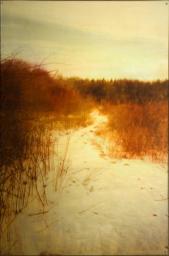
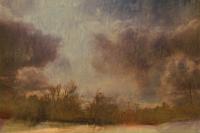
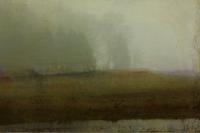
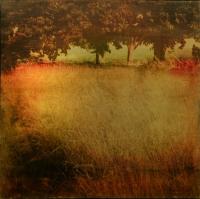
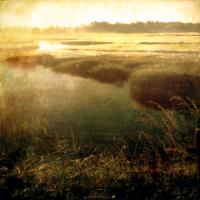
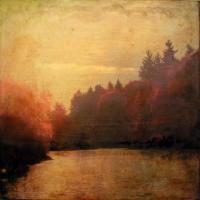
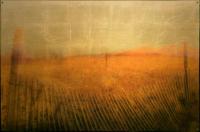
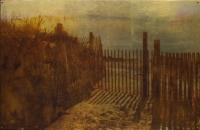
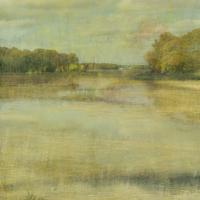

Camera Obscura » Vernici per stampe a getto di inchiostro su carta artistica
said, July 26, 2008 @ 9:11 PM :
[...] per esempio Inkaid, una specie di vernice di cui mi ha parlato Dorothy Simpson Krause nella sua intervista e che, almeno così promettono i costruttori, permette di stampare su ogni [...]
Danx
said, May 30, 2009 @ 11:50 AM :
Uhm se le gallerie non cercano più foto con certi effetti, poichè realizzabili in pochi minuti con Photoshop, allora la fotografia, anche quella che non ha riscontri con la realtà, è considerata artigianato e non arte…